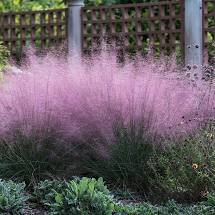Dividing ornamental grasses helps keep them healthy, strong and vibrant
Published 9:24 am Friday, May 8, 2020

- Courtesy Currituck Extension
|
Getting your Trinity Audio player ready...
|
By Chris Blaha, Agriculture Technician, Currituck Extension
Ornamental grasses come in a variety of shapes and sizes. They can provide color, vibrant texture and year-round interest to a landscape. They are attractive when planted in large numbers or when they are used as a specimen or feature plant.
Ornamental grasses and a number of perennials have a unique growing style. The plant grows out from the center and new growth only occurs on the outer edges. It slowly dies out from the center leaving the plant wild and unsightly once it matures.
In order to avoid this wild and unsightly look, we must dig up, divide and replant grasses every few years. One benefit of this practice is the creation of several new plants that you can add to your landscape or share with your friends.
Proper timing and preparation will greatly increase your chances of success. For best results, ornamental grasses should be dug and divided on a cloudy cool day in late winter or early spring. This will give the grass adequate time to establish before the hot summer months.
Preparing a new home for the additional plants that you are about to create in advance will help ensure success when transplanting grasses. Water your plants well for several days before division. In order to make transplanting easier, cut back the stems so that only 2 to 3 inches are left above the soil line. For most situations, pruning shears will work, however larger grasses may require hedge trimmers or even a chainsaw.
After watering for a few days prior to transplanting, it is time to dig and divide your grass. Begin digging a complete circle around the grass with a sharp-pointed shovel. Once you work completely around the grass, pry it out of the ground. The whole clump should be removed. Older, more established grasses may have to be removed in sections.
Now that the clump is out of the ground and exposed, it is time to divide the grass using a sharp spade or ax. Divide sections that are at least 3” in diameter, from the outside edge of the clump. Divisions that are 3” in diameter will yield good first-year results. Avoid taking divisions from the center of the clump. Discard or cut up and compost the “dead” center portion of the clump.
Perhaps the easiest part of the transplanting process is planting the divisions. Dig a hole twice the size of the division root ball. Place the division in the hole so that crown is slightly below the soil line. Mix the soil removed from the hole with your favorite compost or garden soil, then fill the hole, water and fertilize with a balanced fertilizer. A balanced fertilizer is a fertilizer that has three numbers which are the same, such as 10-10-10. If all goes well, new growth will begin to emerge from the crown when the temperatures start to rise in the spring.
For a short step-by-step, how-to video visit the following link: https://youtu.be/zyiV_wOt6ec
For additional information about dividing ornamental grasses or any other horticulture-related topics contact Chris Blaha at 252-232-2262 or email ctblaha@ncsu.edu.
READ ABOUT COMMUNITY NEWS HERE.
RECENT HEADLINES:
Food for Thought: Maintaining outreach during time of social distancing




